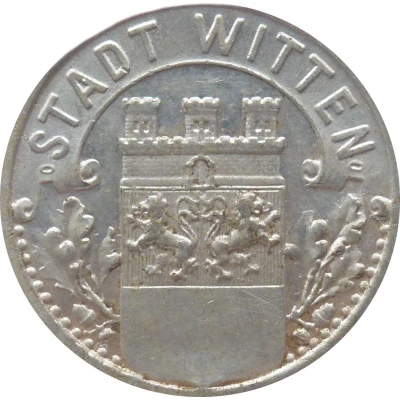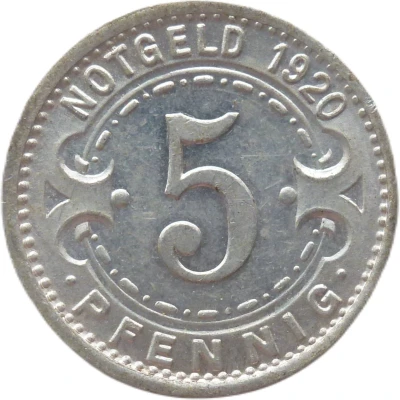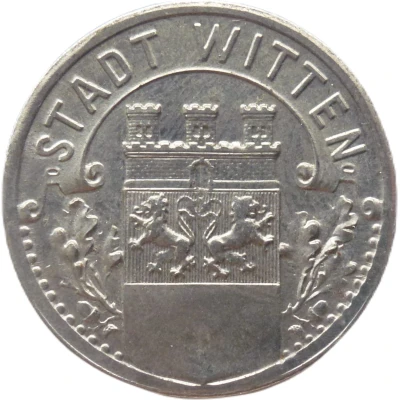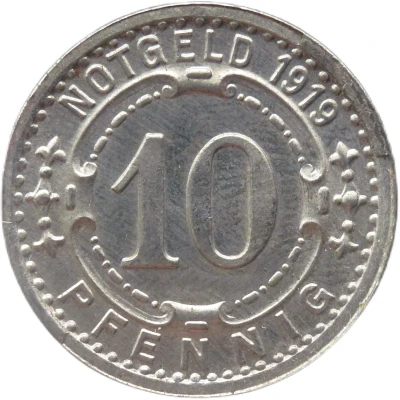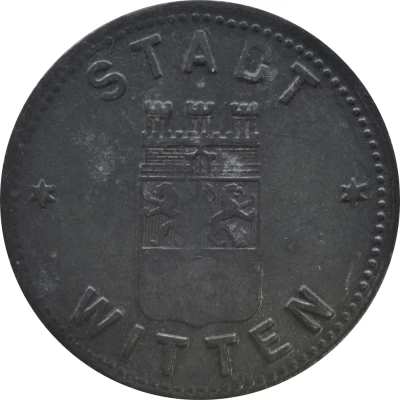
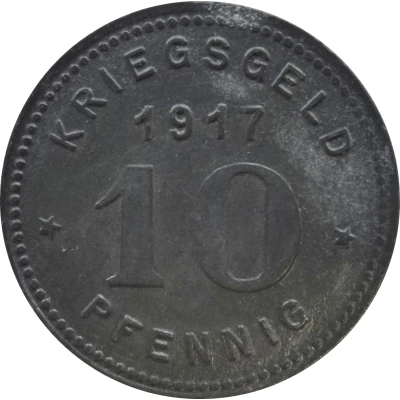

© Willem63 (CC BY-NC-SA)
10 Pfennigs - Witten
1917 year| Zinc | 2.8 g | 23.0 mm |
| Issuer | City of Witten (Prussian province of Westphalia) |
|---|---|
| Emperor | William II (Wilhelm II) (1888-1918) |
| Type | Standard circulation coin |
| Year | 1917 |
| Value | 10 Pfennigs (10 Pfennige) (0.10) |
| Currency | Mark (1914-1924) |
| Composition | Zinc |
| Weight | 2.8 g |
| Diameter | 23.0 mm |
| Thickness | 1.2 mm |
| Shape | Round |
| Technique | Milled |
| Orientation | Medal alignment ↑↑ |
| Demonetized | Yes |
| Updated | 2024-10-04 |
| Numista | N#27604 |
|---|---|
| Rarity index | 46% |
Reverse
Legend top and bottom of date and denomination
Script: Latin
Lettering:
KRIEGSGELD
1917
10
★ PFENNIG ★
Edge
Plain
Comment
Known counterfeits of F#604.2D with "D" in "STADT" not broken (rare)Interesting fact
The 10 Pfennigs coin from Witten, Prussia, 1917, made of zinc, and weighing 2.8 grams, is interesting because it was produced during a time of war. Germany was engaged in World War I, and the government needed to produce coins quickly and cheaply to meet the demands of the war effort. As a result, they used zinc, a cheaper metal than traditional metals like copper or silver, to produce coins. This coin is a unique example of how war can impact the production of currency.
Price
| Date | Mintage | VG | F | VF | XF | AU | UNC |
|---|---|---|---|---|---|---|---|
| 1917 | 200000 | - | - | - | - | - | - |
Values in the table are based on evaluations by sales realized on Internet platforms. They serve as an indication only for 10 Pfennigs - Witten 1917 coin.
